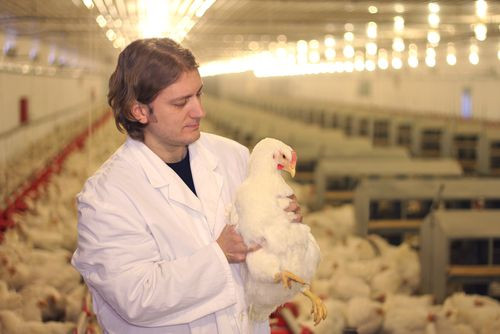FDA To Curb Antibiotic Use In Animals; Urges Pharmaceutical And Food Industries To Collaborate

Eat up, because your days of extra-large meat portions may soon be coming to an end. Today, the Food and Drug Administration (FDA) begins implementation of a new plan intended to phase out the use of antibiotics for food and production purposes — in particular, the use of antibiotics to promote weight gain in animals. Explaining its actions, the FDA said unnecessary use of drugs in animals contributes to the development of antibiotic resistance, which may then be passed on to humans.
“We understand that there may be some effects on the animal production industry,” said William Flynn, deputy director for science policy at FDA’s Center for Veterinary Medicine. “We want to minimize the effects on product costs, but that’s not a primary driver for us as we are mainly concerned with public health.”
Antibiotic Resistance
For more than half a century, antimicrobials — antibiotics, which kill bacteria, and antifungals, which kill fungi — have been used in the feed and sometimes drinking water of poultry, cattle, hogs, and other food animals because these drugs promote faster weight gain. In fact, during 2011 alone, just short of 15,000 tons of antibiotics were used in the feed of domestic food animals. Although some of the antibiotics used for growth-promoting purposes, such as ionophores, belong to a separate animal class, others, including tetracyclines and sulfonamides, are shared among animals and humans both. And this is a problem because over time the animals, or more properly their intestinal bacteria, may develop resistance to these drugs and then this resistance may easily be transferred to humans.
Once this occurs, these antibiotic drugs, which are used to treat serious infections and illnesses in humans, are no longer effective in treating serious illnesses and infections. And, not only are infections from antibiotic-resistant bacteria becoming more common, some bacteria are even developing resistance to multiple classes of antibiotics. In practical terms, what used to be a common unserious infection in the past may now be life-threatening.
At least two million people acquire serious infections with resistant bacteria each year while at least 23,000 people die from such infections. Because using antibiotics and other antimicrobial drugs in animals contributes to the development of resistant bacteria, it is important to limit the use of these drugs so they can remain effective and help fight infectious diseases. And this is where the FDA’s new plan may help. “Antimicrobial resistance has significant public health consequences," said Michael R. Taylor, FDA's deputy commissioner for foods and veterinary medicine, who added, “We have a high confidence that this approach will succeed and will be the most expeditious way to pursue this goal.”
The Plan of Action
“We need to be selective about the drugs we use in animals and when we use them,” Flynn stated in a press release. “Antimicrobial resistance may not be completely preventable, but we need to do what we can to slow it down.” To that end, the plan focuses on antimicrobial drugs that are considered medically important to humans but which are currently approved for use in feed and water of food animals. In its report, Guidance for Industry: The Judicious Use of Medically Important Antimicrobial Drugs in Food-Producing Animals, the FDA limits the use of medically important antimicrobial drugs to “those uses that are considered necessary for assuring animal health.”
Going forward then, food producers will be considered in violation if they use these drugs for any purpose other than for the treatment, control, or prevention of specific diseases or other uses necessary to assure the health of any food-producing animal. And, while phasing out the use of these drugs for growth-promoting purposes, the FDA is also phasing in veterinary oversight of therapeutic uses of these drugs. Specifically, the FDA has provided guidance for drug companies to voluntarily revise the labeled use conditions. Voluntarily, pharmaceutical companies will change the labels of their antimicrobial drugs by removing any specifications for use in production, adding — where appropriate — disease treatment, control, or prevention uses and revising the marketing status to necessitate veterinary oversight or consultation. Drugs previously sold over-the-counter will soon be labeled as either "Veterinary Feed Directive" when administered through feed or "prescription" when administered through water.
How will more label changes affect the industry? “Once the company takes the production use off the label, then it is a violation of law to use these products for production,” Flynn explained. Over the next 90 days, the FDA intends to assess participation, and then over the next three years, the agency will examine compliance and propose next steps toward enforcement of veterinary oversight.
In support of these new measures, Thomas J. Myers, chief policy officer of the Department of Agriculture (USDA), notes his agency is cognizant of a potential impact to be felt by meat consumers and will be following up as well. "[USDA] will be doing some modeling to look at price changes that may occur over the next period," he said. Clearly, the intention all around is to protect the health of citizens, yet these changes in policy and practice may become most apparent in the portions on our plates. Considering the current nationwide struggle with obesity, that effect may soon be seen as an additional benefit.



























